The Late Bronze Age hoard from Trevethin: A Tale of Axes and Spears
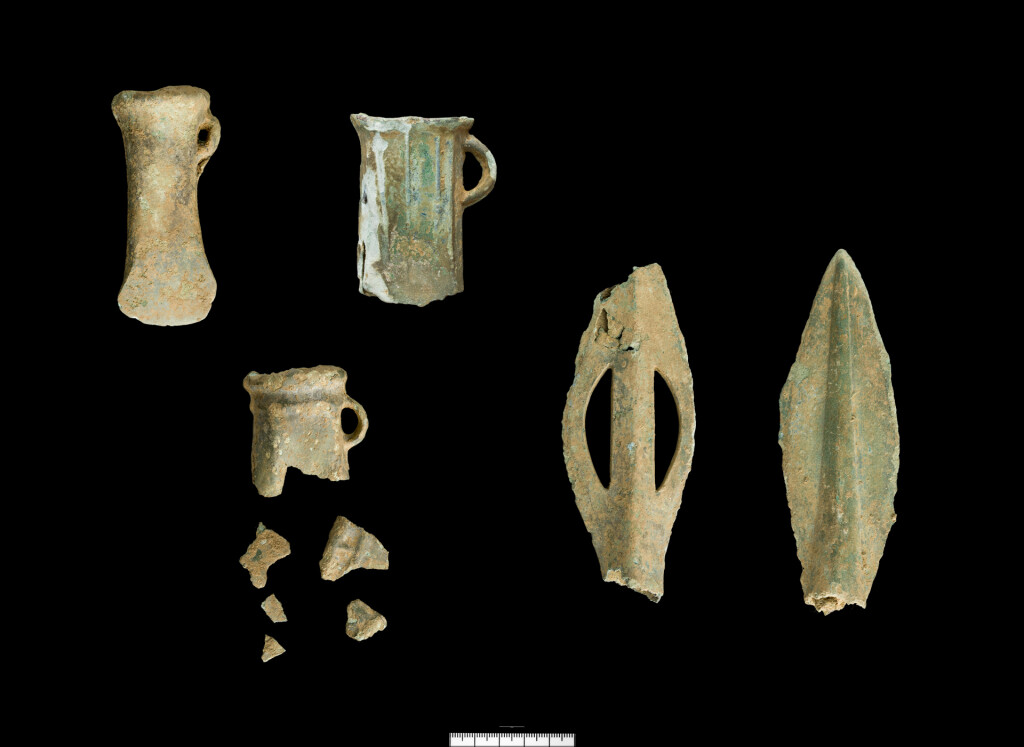
The Trevethin Hoard, Torfaen

The upper blade of the broken South Wales axe.
Imagine the scene. You’re out walking in a field. You have your trusty metal-detector in hand, sweeping backwards and forwards across the ground as you walk. A steady rhythmic beep emits with each step. Suddenly the machine starts beeping more frequently. Something lies beneath the ground. You crouch down to dig, to see what you’ve found. As you dig you start to reveal an ancient axehead…
This was the story for metal-detectorist, Gareth Wileman in November 2014. Over a couple of weeks Gareth uncovered a Late Bronze Age hoard comprising three bronze socketed axeheads and two bronze spearheads in close proximity in the Community of Trevethin, Torfaen.
Recognising the significance of the find, Gareth promptly contacted Mark Lodwick, the Finds Co-ordinator for Portable Antiquities Scheme Cymru, who was able to investigate the hoard findspot. The hoard was buried around 3000 years ago (between 950-800 BC) during the Late Bronze Age. This period is a time when large amounts of metalwork, including weapons and tools, were hoarded and buried in various locations in the landscape.
What’s in the hoard?
While the objects in the hoard may be broadly classed as ‘axeheads’ and ‘spearheads’, each object represents a distinctive type, that we can use to inform our understanding of how different objects were traded in the Bronze Age. Of particular interest is the socket of a ‘South Wales’ socketed axe that was buried within the hoard. The cutting edge was deliberately removed in the Bronze Age. One of the other axes has also been deliberately damaged. These axes have three vertical ribs on both faces and are particularly common in… you guessed it, South Wales!
Conversely, one of the spearheads is relatively rare. It is referred to as a ‘lunate opening spearhead’ due to two semi-circular holes in the middle of the blade. The tip of this spearhead has broken off and part of the socket has broken off, which may also have been deliberate.
Why does the hoard matter?
The Trevethin hoard was found in an area where Bronze Age activity was previously unknown. It adds to a growing volume of Late Bronze Age material found across Wales. Gathering or hoarding objects and burying them is a widespread tradition in the Late Bronze Age, but reasons behind this are uncertain.
Combinations of weapons, such as spears, and tools, such as axes, are common in Late Bronze Age hoards. These categories should not be taken too seriously though; an axe can be a deadly weapon too, while some spearheads might have been ceremonial items. The combination of different objects may represent a single person’s collection of objects. Alternatively, it may reflect several people coming together to bury objects that were important to the local area. We will probably never know exactly what is represented in the Trevethin hoard.
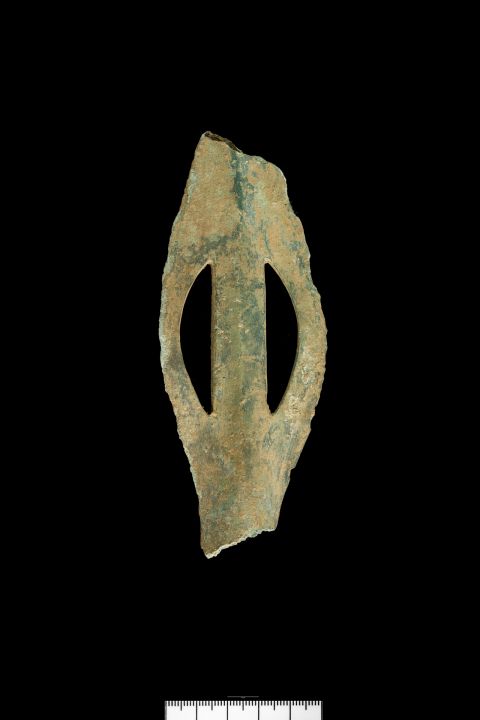
The rare ‘lunate opening’ spearhead.
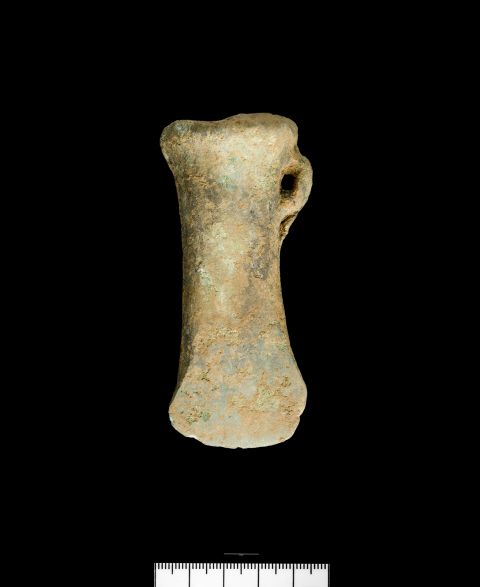
The only complete axe in the hoard
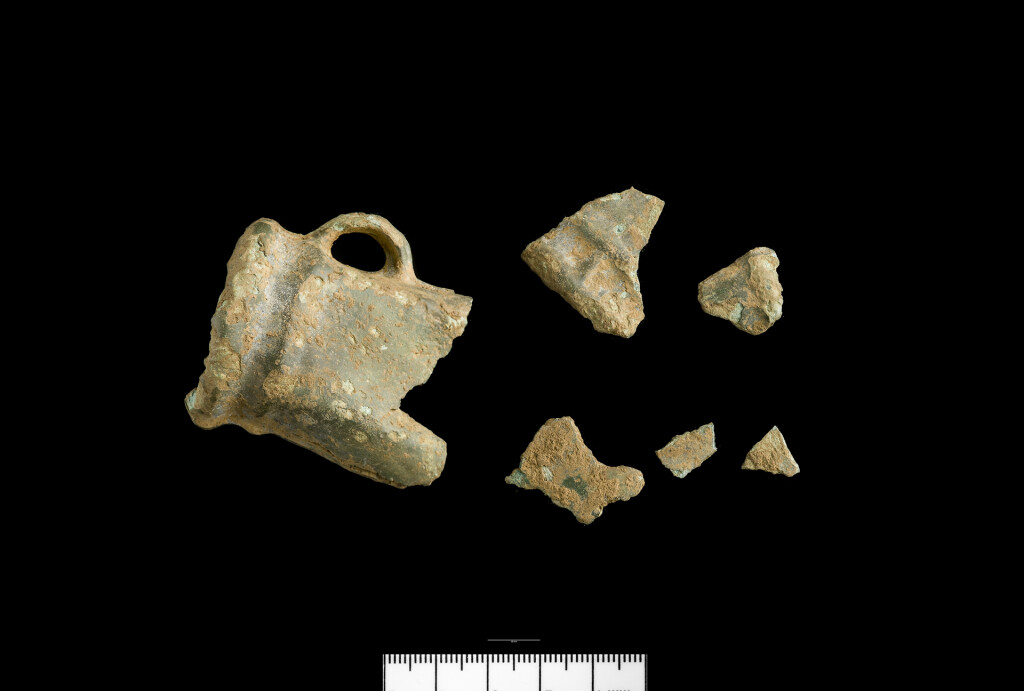
One axe was found broken with lots of smaller fragments.
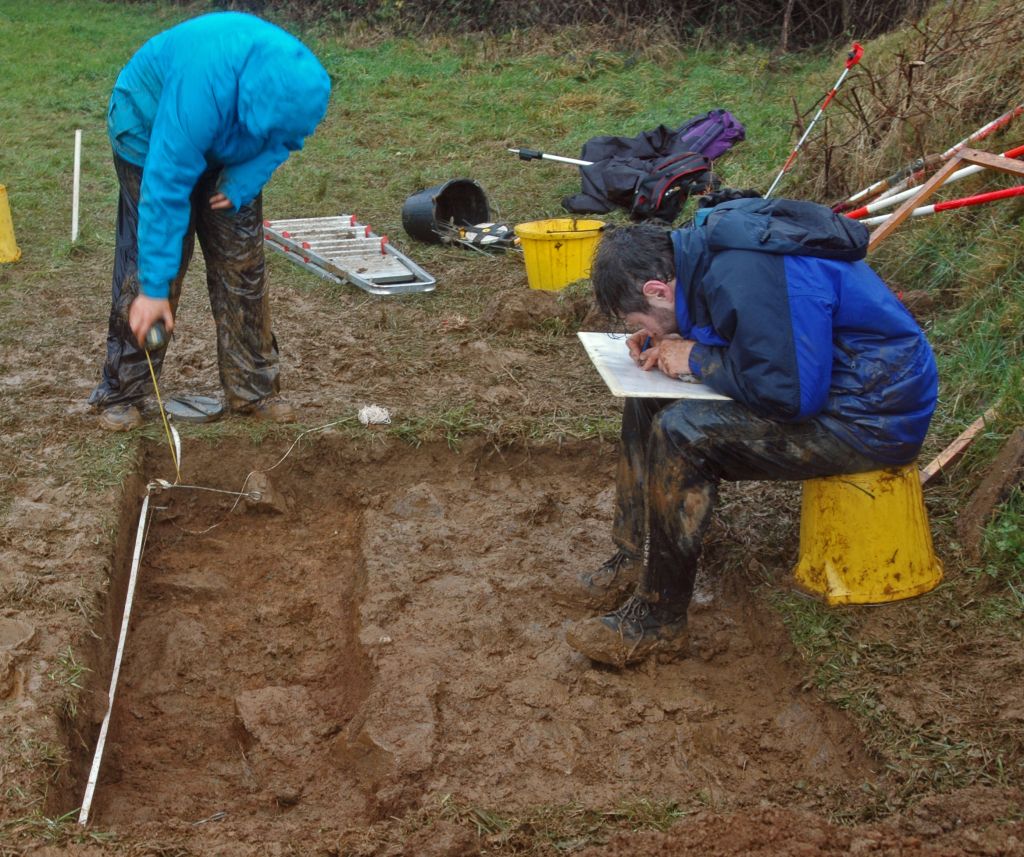
Excavating the hoard was very muddy!
To Break or Not To Break
In the Trevethin hoard, the blades of two of the axes appear to have been deliberately removed. The spearheads display similar intentional damage. However, the third axe was left complete. Why was this? And where are the missing pieces?
It’s possible that the pieces are still out there, waiting to be found. However, deliberately destroying objects in hoards was common. Certain parts of objects were selected for burial – in this case the socket end of the axes – while others were excluded (the cutting edge). In other hoards, we sometimes only find axe blades and no sockets. The part of the object that was included may have been important.
Including complete objects also has significance. At Trevethin, the complete axe was sharpened and probably used before it was buried. It still would have been functional, so why abandon a useful, usable tool? It is possible the axe was used over many years and was significant to its owners, which made it suitable for burial.
It’s important to think of these items as both functional and symbolic objects.
Understanding the Bronze Age
Archaeology is about understanding people in the past. The Trevethin hoard offers a valuable insight into the Bronze Age in this area of Wales, where previously no prehistoric material was known. It shows that Bronze Age communities were present and engaging with their objects in mysterious ways we might only speculate. Every find helps us understand the broader picture, and the Trevethin hoard is an important step towards this.
Notes and Acknowledgements
This hoard was responsibly reported through Portable Antiquities Scheme Cymru and is now proudly on display at Pontypool Museum where it can be enjoyed by all members of the public. It was acquired with funding from the Saving Treasures: Telling Stories Project. More details on how the hoard was investigated, as well as a conversation with the finder, Gareth Wileman, can be found here.
Thanks to Adam Gwilt (Principal Curator: Prehistory at National Museum Wales) and Mark Lodwick (Finds Coordinator: PAS Cymru) for allowing me access to an unpublished report on the hoard.

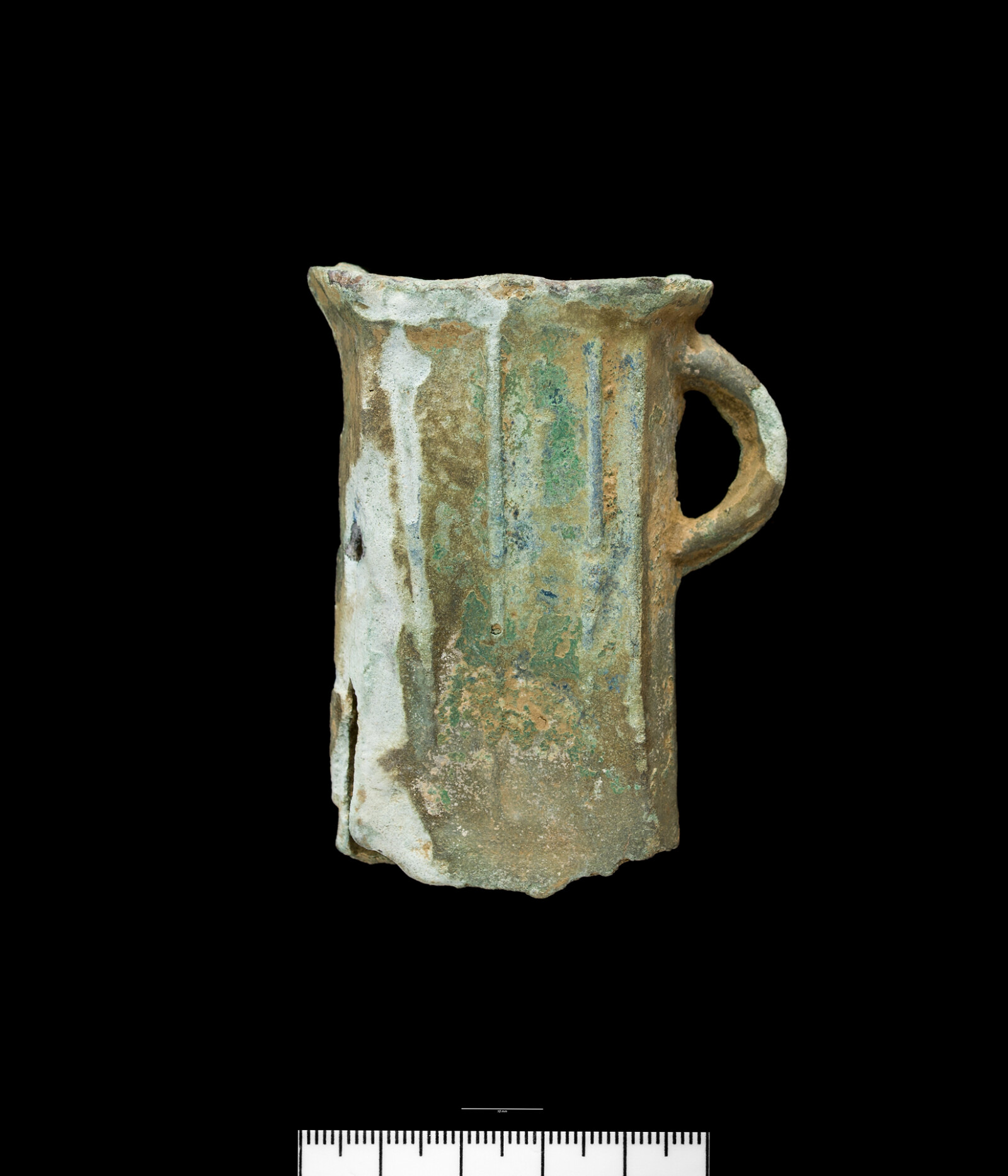




Comments - (3)
There’s loads to show you about Trevethin been looking for years got interesting photos to show you I think Trevethin to blaenavon was defence point for silures and cactacus cactacus had the dry stone wall constructed that stretched miles look at Trevethin from Abergavenny road it as natural defence steep mountain bank any army would struggle to attack on otherside Trevethin side is where a wall system dry stone walls 6 feet tall in some places four foot wide it would took army to build it I think cactacus new what was coming he had all ready fought Romans’ Trevethin would been stronghold of the silures I think the wearing of deer antlers by silure to scared the superstitious Romans’
I have photos on google look up kingarthwys or lyndonwhite9 Twitter
Hi Ashley,
Thank you for your questions – they are important points you raise. As you correctly stated, the objects were all found by the metal-detectorist.
Following discoveries such as the Trevethin hoard, archaeologists will often go out with the finder to investigate the findspot by opening a small excavation trench. There are several aims to this: firstly, to verify exactly where the objects were recovered from; secondly, to search for any objects (including non-metal objects!) that might still be buried; thirdly to locate any possible feature into which the objects were buried. In the past, archaeologists have found more objects or identified prehistoric pits in which objects were buried. We can gain important environmental information from the surrounding soil as well as determining if there might have once been organic objects (e.g. leather bags, wooden hafts etc.) that have since decayed. Finally, we also use these opportunities to explore the overall landscape context to see if there are any features that might have influenced the burial of the objects (e.g. proximity to hilltops, rivers, coastlines etc.).
At Trevethin, archaeologists found the metal-detectorist pit from which the objects were dug, confirmed by the presence of a spearhead socket fragment. This fragment refitted with one of the spearheads (though is not pictured here) and was the only additional piece found. By determining the exact detectorist pit, we have been able to locate this into the Ordnance Survey grid, which can inform future archaeological investigations.
Unfortunately, no definite feature (e.g. a prehistoric pit) was found, but a later bank was identified; it is possible the original position of the objects was shifted while the bank was being constructed.
Although no feature was found, the archaeological investigation helped improve our knowledge of where and how the hoard was buried, with the assistance of the metal-detectorist. Investigations such as these are very important for verifying and obtaining information that might otherwise not be recorded.
I hope this answers your questions.
Matt